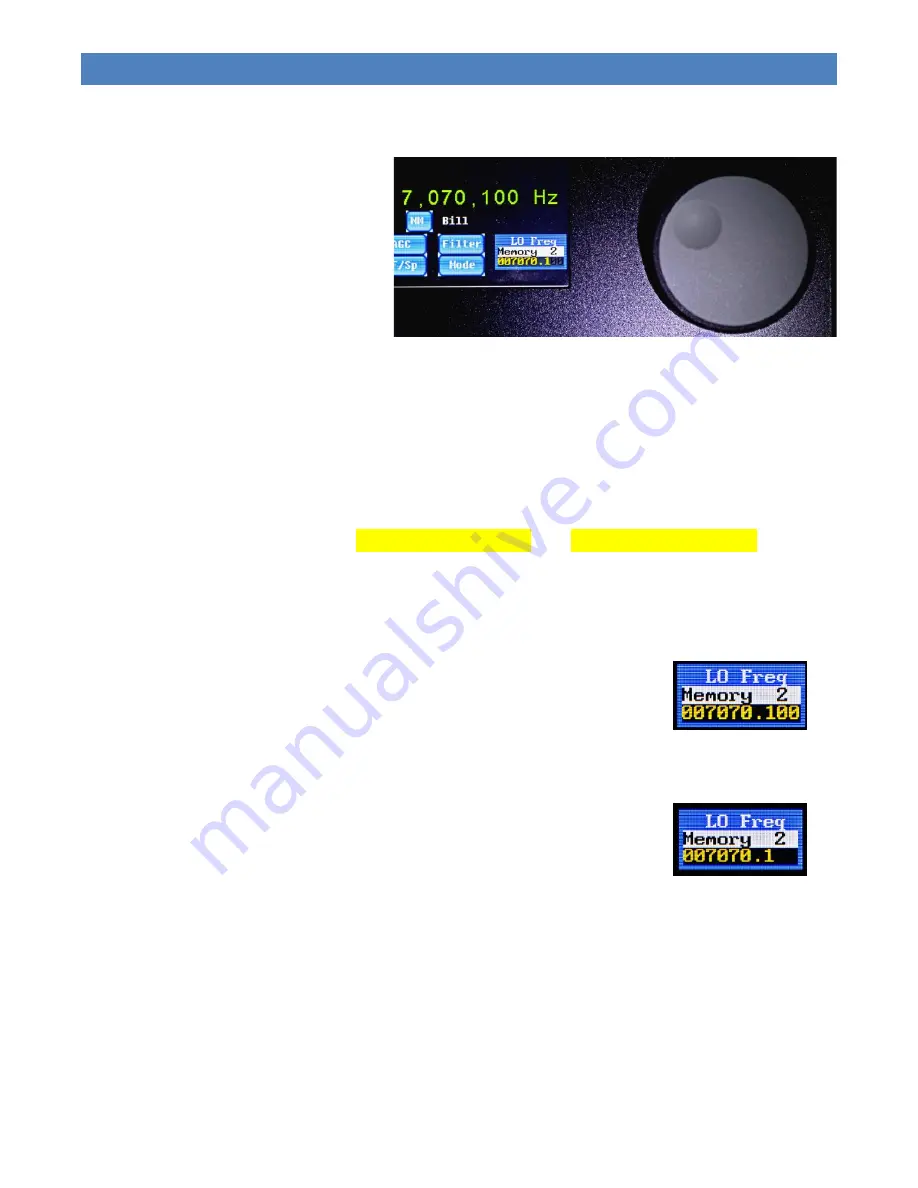
IQ32 SDR TRANSCEIVER OPERATIONS MANUAL
P a g e
| 36
Frequency Tuning
The
LO Freq
widget displays the cur-
rent frequency of operation and the
last selected memory. Memory selec-
tion will be discussed in the next sec-
tion.
The current frequency is adjusted by
rotating the right rotary encoder
clockwise to increase and counter-
clockwise to decrease the frequency.
The frequency is displayed on the bottom line of the widget. In SSB and CW modes, the fre-
quency is displayed in large green characters as shown in Figure 47.
You can adjust the step size or tuning step resolution of the frequency by pressing and holding
in the right rotary encoder and rotating clockwise for smaller steps or counterclockwise for
larger steps.
If a PS2 keyboard is attached, the
LEFT ARROW
(
)
and
RIGHT ARROW
(
→
)
keys may
be used to adjust the tuning step resolution of the frequency.
A third method is available. With a small pointed stylus touch the left edge of the frequency
display to increase the tuning step size. Touch the right edge to decrease the tuning step size.
Figure 48 shows the minimum tuning step of 1 Hz, with all digits in
yellow.
Figure 49 shows a tuning step size of 100 Hz indicated by the yellow
digits. The 1 and 10 digits are grayed out to indicate they are not ac-
tive.
This tuning step adjustment allows steps sizes from 1 Hz to 100MHz.
In normal operation, this is limited to 35MHz. When setting the fre-
quency offset for use with a transverter, the full adjustment range is
possible. This will be covered in the next section.
Figure 48: Minimum
Tuning Step of 1 Hz
Figure 47: Frequency Tuning
Figure 49: Tuning
Step of 100 Hz






























